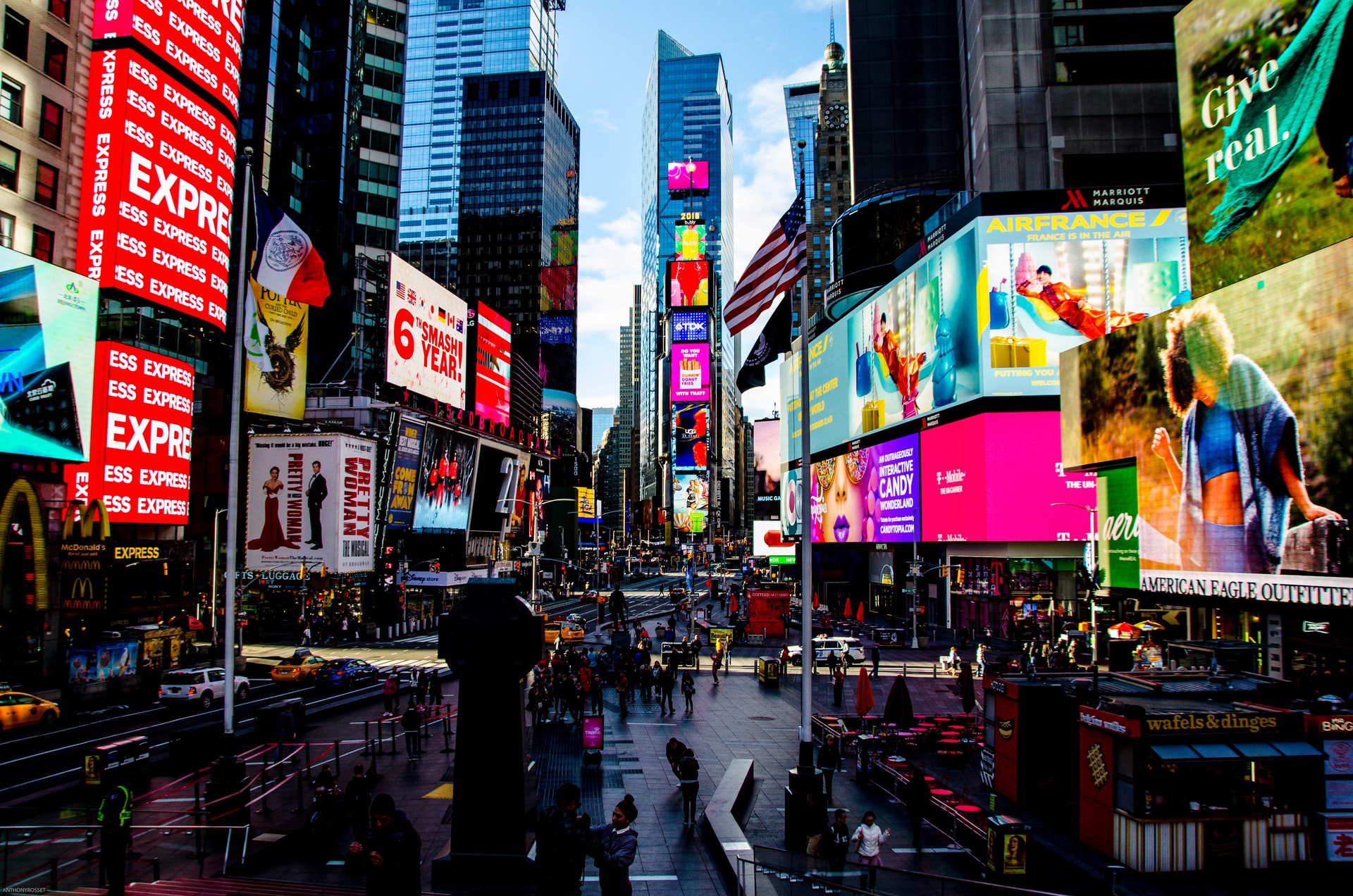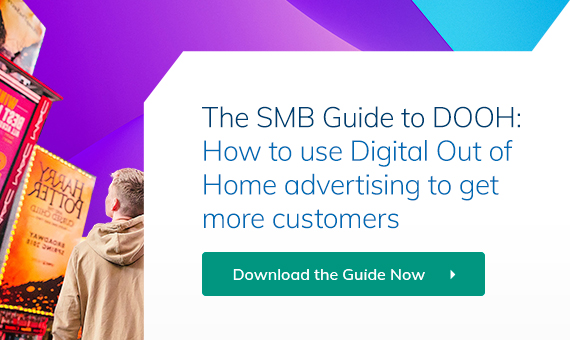Last year was a big year for programmatic advertising.
More than 89% of all digital display ad spend was programmatic in 2021, according to the latest figures from eMarketer – amounting to nearly $97 billion and representing a 29% rise over 2020. By the end of 2022, it is forecast that 9 out of 10 digital display advertising dollars will be transacted via programmatic advertising platforms.
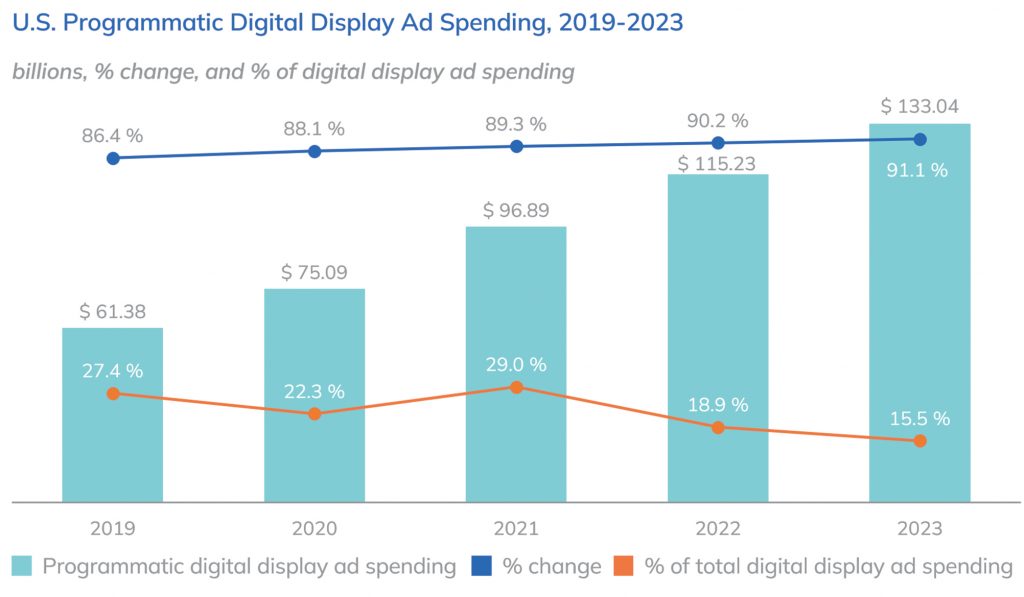
(Image source: emarketer.com)
Why are so many marketers and businesses using programmatic ad platforms for their digital marketing and digital advertising campaigns? What are programmatic ads and programmatic buying? And how do programmatic advertising platforms work?
We’ve put together this post to answer those questions. We’ll look at how programmatic platforms and ad campaigns work, and reveal the benefits of using a programmatic advertising platform for your digital display campaigns – both online and in the increasingly important out of home (OOH) ad space.
What Is Programmatic Ad Buying?
In the simplest of terms, programmatic ad buying is the practice of using software to automatically bid for and buy ad inventory across ad networks – as opposed to buying ad space (be it print, online, or out of home) manually from publishers. Much like Google Ads you are buying impressions at a cost per thousand impressions (CPM).
Programmatic advertising is designed to increase both the efficiency of the ad buying process and the effectiveness of the resulting campaign.
Efficiency is achieved through the use of AI and automation, which allows advertisers to buy advertising in real time – rather than going through intermediary agencies and embarking on time-consuming negotiations.
Programmatic advertising campaigns are also more effective than traditional methods of ad buying because they ensure your ads are seen by your target audience. When you buy ad space programmatically, your campaign criteria are automatically matched to audience data – meaning your ads only get show to relevant customers.
Let’s use an online advertising example. Let’s say you sell hand-carved children’s toys, and you want to advertise to people on social media who have visited your website but didn’t make a purchase. You enter this criteria into your programmatic advertising platform, set a budget for your campaign and a duration.
Now, the next time one of your website visitors visits their favorite social network, the programmatic ad tech starts the real time bidding (RTB) process. In the time it takes for the social media page to load, a real time auction takes place between you and all other advertisers that want to show the customer an advertisement – and the winning bidder gets its ad displayed.
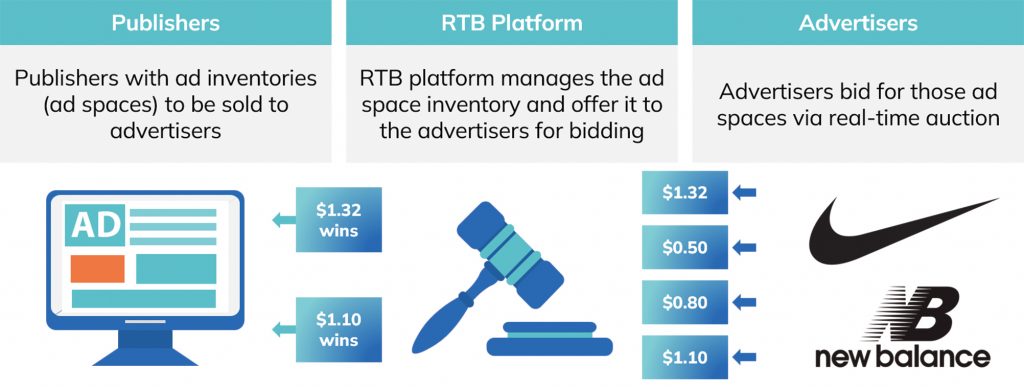
(Image source: theappsolutions.com)
The programmatic advertising process differs significantly from traditional ways of buying space on an ad network. Historically, advertisers would manually negotiate with publishers to run their ads in places they believed matched their target audiences. The trouble here is that the ads would then be displayed to every single visitor – regardless of whether they were a relevant customer or not.
By contrast, with programmatic advertising, you only ever pay for ad space when your campaign criteria align with pre-defined audience segments – increasing the effectiveness of campaigns and improving ROI through granular audience targeting.
Can Offline Advertising Be Bought Programmatically?
Yes, it can.
Though programmatic advertising began life as a digital marketing solution, allowing advertisers to programmatically buy ad placements on websites, mobile apps, and social media, the programmatic ecosystem has now expanded to encompass offline channels, such as digital billboards and other digital signage at bus stations, in shopping malls, on street furniture, and in office buildings, bars, restaurants and sports and entertainment venues.
Read more: What Is Place Based Media in Programmatic DOOH?
In fact, the digital out of home (DOOH) advertising space is one of the fastest growing segments for programmatic. According to recent figures, in the US, programmatic DOOH (pDOOH) was used in 47% of campaigns over the last 18 months – a figure which is expected to grow to 56% in the next year and a half.
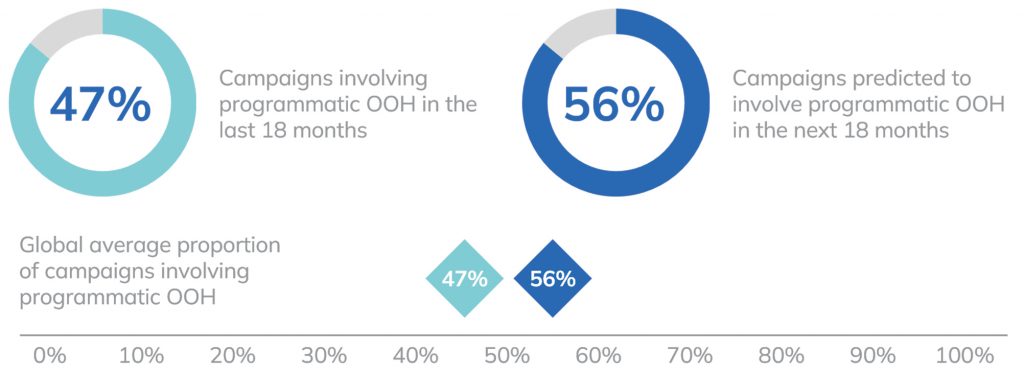
(Image source: Programmatic OOH 2021)
This growth is thanks to the advent of programmatic advertising platforms. Whereas in the past, programmatic campaigns were the reserve of big brands and media agencies with big budgets, the new generation programmatic platforms like The Neuron give even smaller brands and SMBs equal access to pDOOH ad tech, allowing them to compete with brands of all shapes and sizes without going through expensive middlemen.
And of course, the growth of programmatic DOOH is also attributable to the huge range of benefits it offers.
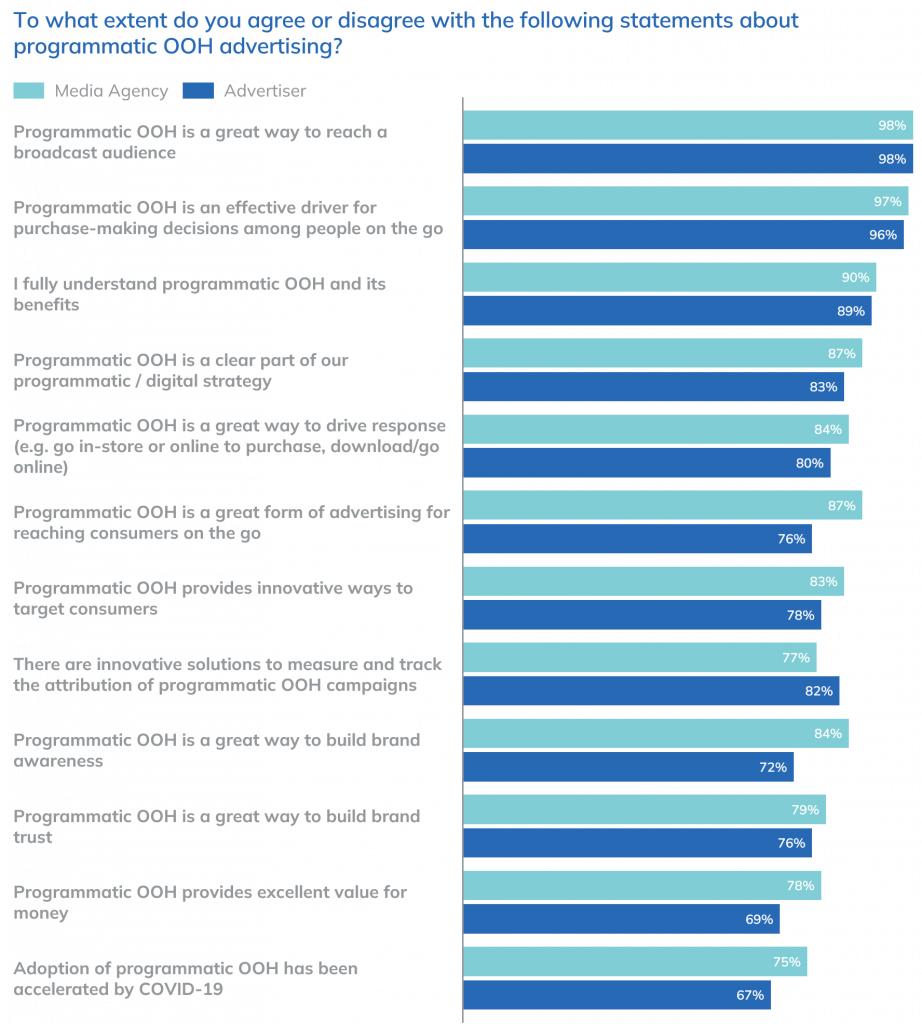
(Image source: Programmatic OOH 2021)
What Are Programmatic Advertising Platforms and How Do They Work?
Programmatic advertising platforms bring together all the various tools that are needed to make programmatic marketing and advertising possible. Separately, these tools are demand side platforms (DSPs), supply side platforms (SSPs), and ad exchanges.
Let’s break them down.
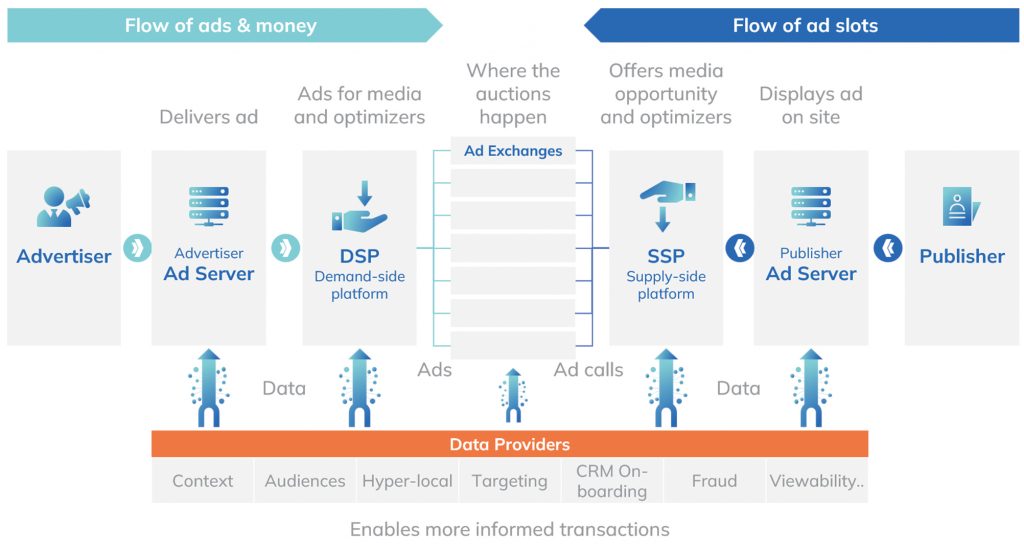
(Image source: pmg.com)
Demand Side Platforms
If you’re an SMB looking to purchase advertising space programmatically, the tool you will use is a demand side platform (DSP).
DSPs allow advertisers to bid for ad inventory directly on the platform itself, rather than negotiating with an intermediary agency. In the world of digital out of home advertising, demand side platforms give businesses direct access to the digital signage and ad networks provided by leading DOOH media owners, including Global Outdoor, JCDecaux, Lamar and Clear Channel.
As well as automating the bidding and ad buying process, DSPs like The Neuron provide advertisers with powerful tools that allow them to set specific conditions for their ad campaign, ensuring that ads only run at precise times when relevant audiences can be accurately targeted.
Among many other things, The Neuron allows you to bid for inventory based on:
- Time of day, week, or month
- Audience demographics
- Estimated footfall per digital screen
- External factors, such as weather conditions, news events, travel data, and sports results
A powerful DSP like The Neuron also provides the following real-time campaign analytics:
- Number of ad impressions by campaign, screen, and location
- Number of playouts
- Individual screen performance
- Effective cost per mile (eCPM), or the cost per thousand ad impressions
The ability to keep constant track of these figures mean businesses can see precisely what’s working and what’s not, and optimize campaigns in real-time to improve the ROI of every ad.
Read more: Supply Side Vs Demand Side Platforms: What’s the Difference?
Supply Side Platforms
Whereas DSPs are used by media buyers to purchase ad inventory, supply side platforms are used by media owners to sell space on their websites, apps, or out of home digital signage.
Like DSPs, SSPs use automation to sell advertising space – eliminating the need for sellers to engage with intermediaries and middlemen, and instead connect directly with potential customers.
SSPs utilize key data from multiple sources to help advertisers target the customers they want to reach with their advertisements. As such, when media owners have inventory available that matches a buyer’s campaign criteria, the supply side platform helps the two parties find each other.
Audience Targeting
With the advent of powerful programmatic buying platforms for DOOH media space, advertisers can now define precisely where and when an ad is shown based on precise campaign criteria. This includes not only where target consumer groups congregate, but also on external factors such as time of day, weather conditions, news events, sports results, travel data and more.
The result is that advertisers can now target consumers at a granular level and reach the right audience with the right message at the right time and location where they are most likely to make a purchase.
Ad Exchanges
Ad exchanges are the third piece of the programmatic advertising platform tech stack.
Simply put, an ad exchange is the online marketplace which connects DSPs and SSPs together so ads can be bought and sold.
That said, an ad exchange isn’t always necessary to link demand and supply side platforms together. Indeed, DSPs and SSPs can interact directly and thus avoid the use of third-party ad exchanges to buy and sell ads.
Get Started with The Neuron Today – Your Convenient and Powerful Demand Side Platform
If you’re looking to supercharge your outdoor advertising efforts, you need a programmatic advertising platform that will save you time through automated bidding, enable you to target customers at a granular level, and let you keep constant track of each of your campaign’s successes in real time.
The Neuron is a powerful and user-friendly programmatic demand side platform designed specifically for SMBs. Integrated directly with leading SSPs worldwide, The Neuron provides instant access to DOOH inventory owners – simply upload your creative, bid for space, and set your campaigns live in a few simple clicks.
